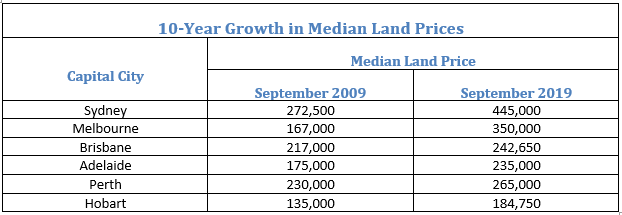The upturn in the housing market felt during the second half of 2019 also resulted in a strong growth in residential land sales, according to the latest report from the Housing Industry Association (HIA) and CoreLogic.
Residential land sales increased by 45.9% during the final months of the year from their record-low in the March 2019 quarter, according to the HIA-CoreLogic Residential Land Report.
"The first half of 2019 was particularly rough for the residential building industry, with falling house prices, uncertainty surrounding the election, and the credit squeeze all weighing on confidence," said Angela Lillicrap, an economist at HIA.
The demand for land and dwellings rebounded strongly from June, which has led to a 6.7% rebound in national housing values over the past seven months.
This renewed confidence was driven by the three rate cuts by the Reserve Bank of Australia last year and the election results that dispelled concerns about negative gearing and capital gains concessions, said Eliza Owen, head of residential research at CoreLogic.
Also read: Will Coronavirus Impact Property Prices?
"Prices for land and housing are likely to rise further over 2020, though this may be slightly mitigated by higher listing levels coming to market, as sellers take advantage of price increases," Owen said.
Lillicrap said the shortage of land is one of the factors that boosted home prices over the past decade. In fact, land prices in some of the capital cities have increased dramatically since 2009.
For instance, the median land price in Sydney went from $272,750 in September 2009 to $445,000 in the same month last year.
Melbourne also recorded a dramatic 10-year land-price growth from $167,000 to $350,000.
"With demand for land picking up, it is important that an adequate supply is maintained each year to avoid undue pressure on housing affordability," Lillicrap said.
The table below shows the comparison between median land prices in 2009 and 2019:
